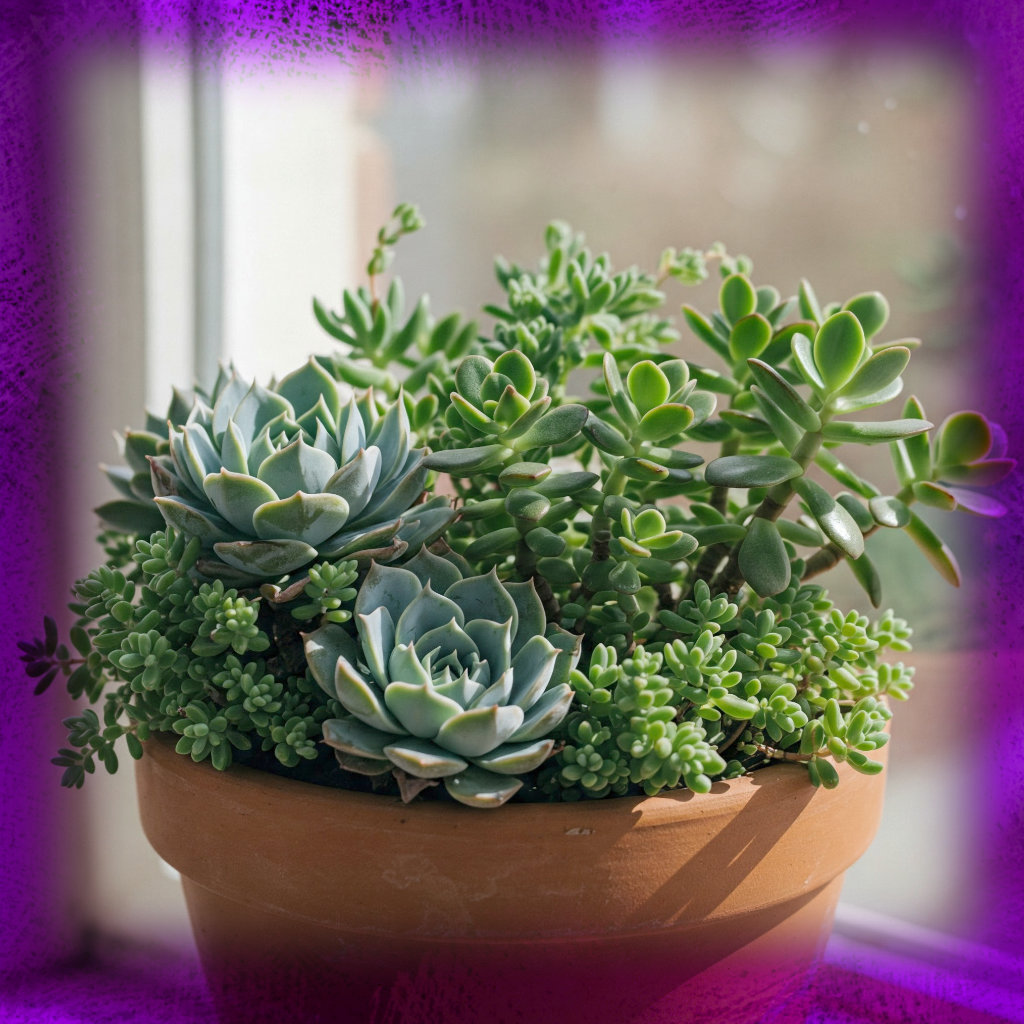Why Soil Matters for Succulent Success
Succulents languish in standard potting soil. Their roots demand a gritty, breathable environment—mimicking the arid landscapes they evolved in. A tailored soil mix prevents rot, encourages robust growth, and unlocks vibrant coloration.
Common Mistakes in Succulent Soil Selection
Novices often use moisture-retentive blends, dooming plants to suffocated roots and fungal infections. Overly organic mixes decompose into a dense, waterlogged mass—antithetical to succulent survival.
The Science Behind Well-Draining Mixes
Rapid drainage isn’t just about avoiding overwatering. It ensures oxygen reaches roots, facilitates nutrient uptake, and prevents pathogenic microbes from thriving.
Section 1: Understanding Succulent Soil Needs
Root Respiration: Why Airflow Is Critical
Succulent roots asphyxiate in stagnant conditions. Unlike tropical plants, they rely on frequent drying cycles to “breathe.” A porous mix mimics the airy crevices of rocky outcrops.
The Perils of Water Retention
Peat-based soils act like sponges, clinging to moisture long after watering. Succulents interpret this as drought stress, triggering premature leaf drop or etiolation.
How Particle Size Affects Drainage
Ideal particle size (2–5mm) creates capillary gaps—large enough to drain swiftly but small enough to retain微量 moisture. Dust-like components clog these spaces, while oversized chunks destabilize roots.
pH Preferences of Succulents
Most thrive in slightly acidic to neutral pH (6.0–7.0). Alkaline mixes—common with limestone-based additives—can inhibit iron absorption, leading to chlorosis.
Organic vs. Inorganic Components
Organic matter (e.g., compost) provides nutrients but decomposes unpredictably. Inorganic materials (pumice, grit) ensure lasting structure. Balance is key: 30–50% organic for most succulents, as low as 10% for desert species.
Section 2: Essential Components of a Superior Succulent Mix
Coarse Sand: The Backbone of Drainage
Horticultural sand (not beach sand) prevents compaction. Its angular grains interlock, creating permanent air channels.
Perlite vs. Pumice: Aeration Showdown
Perlite is lightweight and affordable but floats to the surface over time. Pumice, though costlier, retains water internally while aerating the mix—ideal for xeric plants.
The Role of Grit in Preventing Compaction
Granite or poultry grit adds weight and mineral content. Unlike rounded pebbles, its jagged edges resist settling.
Coconut Coir: A Sustainable Alternative to Peat
Coir resists decomposition, maintains structure for years, and has a neutral pH. Pre-rinse to remove salts.
Section 3: Pre-Mixed vs. DIY Soil Blends
Evaluating Commercial Succulent Soils
Most store-bought mixes still require amendment. Look for products listing pumice, perlite, or bark as primary ingredients rather than peat moss. Premium brands like Bonsai Jack or Superfly Bonsai offer ready-made gritty mixes worth the investment for serious collectors.
When to Trust Store-Bought Mixes
Pre-mixed soils work well for beginners or those with small collections. For rare specimens or humid climates, always supplement with additional grit. Check the bag’s weight – quality mixes feel coarse, not fluffy.
Custom Blends for Specific Succulent Types
Haworthias prefer slightly more organic matter than cacti. Create a “transitional” mix (40% inorganic) for soft succulents like Echeveria. Lithops demand near-total mineral content (90% grit).
Cost-Effectiveness of Homemade Mixes
Bulk components yield significant savings. A 25lb bag of pumice costs less per gallon than pre-mixed soils. Store dry ingredients in sealed containers to prevent moisture absorption.
Recipe: Basic All-Purpose Succulent Soil
- 2 parts pumice
- 1 part coconut coir
- 1 part coarse sand
- ½ part activated charcoal
This blend suits most common succulents while preventing common issues like algae growth.
Recipe: Advanced Mineral-Heavy Blend
- 3 parts scoria (lava rock)
- 1 part akadama
- 1 part zeolite
- ½ part biochar
Professional-grade mix for mesembs and caudiciforms, providing perfect drainage and trace minerals.
Section 4: Soil Mixes for Different Succulent Varieties
Desert Dwellers: Cacti and Agave Mixes
These xeric plants thrive in nearly mineral-only substrates. Use 80% inorganic materials like turface, granite chips, and poultry grit. The remaining 20% organic should be fibrous coconut chips rather than fine matter.
Epiphytic Succulents: Rhipsalis and Epiphyllum Needs
Mimic their tree-dwelling nature with:
- 50% orchid bark
- 30% perlite
- 20% horticultural charcoal
The chunky texture prevents soggy roots while allowing aerial root attachment.
Lithops and Mesembs: The Grittiest Mixes
“Living stones” require exceptional drainage:
- 90% pumice/grit mix
- 10% sifted compost
Top dress with quartz gravel to prevent stem rot from soil contact.
Soft-Leaved Succulents: Balancing Moisture
Graptopetalum and similar hybrids need:
- 60% inorganic
- 40% organic
Add water-retentive components like calcined clay to prevent shriveling between waterings.
Section 5: Potting and Maintenance Techniques
Layering Soil for Optimal Drainage
Create a “drainage sandwich”:
- Coarse lava rock base (1-2″)
- Main soil mix
- Fine pumice topping
This prevents perched water tables while allowing capillary action.
Top Dressing: Aesthetic and Functional Benefits
A ¼” layer of decorative grit:
- Reduces evaporation
- Prevents soil splash
- Discourages fungus gnats
Choose colors that complement your plants’ hues.
When and How to Refresh Soil
Replace mixes every 2-3 years or when:
- Water pools on surface
- Roots circle densely
- Salt crusts appear
Gently bare-root plants and prune dead roots before repotting.
Signs Your Soil Needs Replacement
Watch for:
- Persistent fungus gnats
- White mineral deposits
- Foul odors
- Collapsing structure
These indicate decomposition or salt buildup.
Section 6: Troubleshooting Soil-Related Issues
Moldy Soil: Causes and Solutions
Surface mold signals excess moisture and poor airflow. Remove affected areas, increase inorganic content, and apply a cinnamon powder fungicide.
Compacted Soil Revival Techniques
For salvaging old mixes:
- Screen out fines
- Add fresh pumice
- Incorporate rice hulls for temporary loft
Avoid “fluffing” compacted soil – it re-settles quickly.
Dealing with Nutrient Lockout
White crusts indicate salt accumulation. Leach pots with distilled water (3x volume), then repot with fresh mix containing biochar to absorb excess minerals.
Conclusion
Recap: The Golden Rules of Succulent Soil
- Drainage trumps water retention
- Particle size matters more than composition
- Match mixes to species needs
- Refresh before problems appear
Encouraging Experimentation for Ideal Results
Every grower’s environment differs. Track plant responses to adjust ratios seasonally. What thrives in Arizona may fail in Florida – adapt accordingly.

